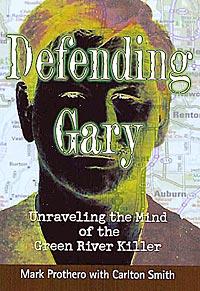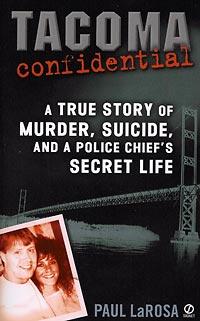State's crime, under covers

The morbid fascination with inexplicable evil brings three new books on two of the most infamous crimes in Washington history. A TV news producer has produced a compelling book about the Tacoma police chief who killed his wife and himself. Two books revisit the Green River killings: one by an academic former reporter and one by a defense lawyer.
Green River killer still casts a shadow
Tomás Guillén is a former Seattle Times reporter who co-wrote "The Search for the Green River Killer" 15 years ago and now takes a more academic view from his position as an assistant professor of communications at Seattle University.
"Serial Killers: Issues Explored Through the Green River Murders" is a collection of a dozen essays that examine police and media policies and the effect on families of the victims.
Guillén offers many pointed observations as he revisits the still-painful killings, reviews the tortuous investigation and touches on the lingering question: How did a stammering, nondescript factory worker, Gary Leon Ridgway, known as "Wrongway," manage to kill at least 48 women and elude police for nearly two decades?
First, there was a law that prevented parents from forcing runaway teenage girls to return home, Guillén writes. Police couldn't track them or control the prostitution that made them easy victims. The investigation had more than its share of errors, and Ridgway turned out to have cunning street instincts.
Guillén has the experience and intelligence to draw out lessons useful to the police, political leaders and the public. One wishes for more analysis, and perhaps a later edition might fulfill the promise of the title and compare Ridgway to other serial killers.
"Serial Killers" is accompanied by a DVD that includes some of the video of Ridgway's interrogation after he agreed to cooperate in return for his life.
The lawyer who saved Green River killer's life
Mark Prothero was the lead defense lawyer for Ridgway in the two years between his arrest and sentencing for killing 48 women in the Seattle area.
"Defending Gary: Unraveling the Mind of the Green River Killer," due out in May, is his first-person chronological account of dealing with his client, other lawyers, prosecutors and investigators.
It details the negotiations that led to the plea bargain to spare Ridgway's life in return for his help in accounting for dozens of deaths, mostly in the early 1980s.
Prothero offers his perspective on what remains a troubling case. He knows as much as anyone about the "nasty, tricky little man" — his bedwetting, problems with women, gruesome murder details, his uncanny ability to avoid detection.
There were plenty of missed opportunities — now visible in hindsight. Prothero is particularly critical of Dave Reichert, the first King County detective on the case who became sheriff and is now a congressman. Prothero says Reichert overlooked Ridgway to focus on another suspect, a cab driver who publicly criticized the investigation.
"Defending Gary" was written with Carlton Smith, the former Seattle Times reporter who also was co-author with Guillén of the 1991 book "The Search for the Green River Killer."
Murder-suicide by Tacoma's top cop
Paul LaRosa, a former New York Daily News reporter from Brooklyn, produced a show for the CBS newsmagazine "48 Hours" about the 2003 shootings in which Tacoma Police Chief David Brame killed his wife, Crystal, and himself.
That turned into a book project in which LaRosa spent a year and a half visiting Tacoma, reading court records and reports and conducting interviews to produce "Tacoma Confidential: A True Story of Murder, Suicide, and a Police Chief's Secret Life."
The result is a true-crime book that's both sensational and quality journalism.
Instead of a tragic figure dealing with a disintegrating marriage, Brame is revealed as an authoritarian creep who tried to draw one of his female officers into three-way sex with his wife.
LaRosa expertly creates portraits of Brame, Crystal Brame and their families, captures the context of Gig Harbor and Tacoma, and portrays the dynamics of the police department and city politics.

